Roshan P Mathews
Unsupervised multi-latent space reinforcement learning framework for video summarization in ultrasound imaging
Sep 03, 2021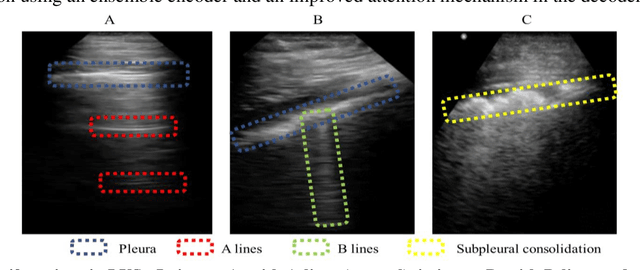
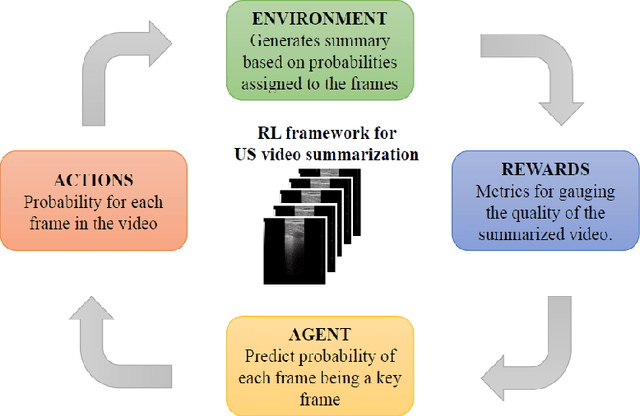
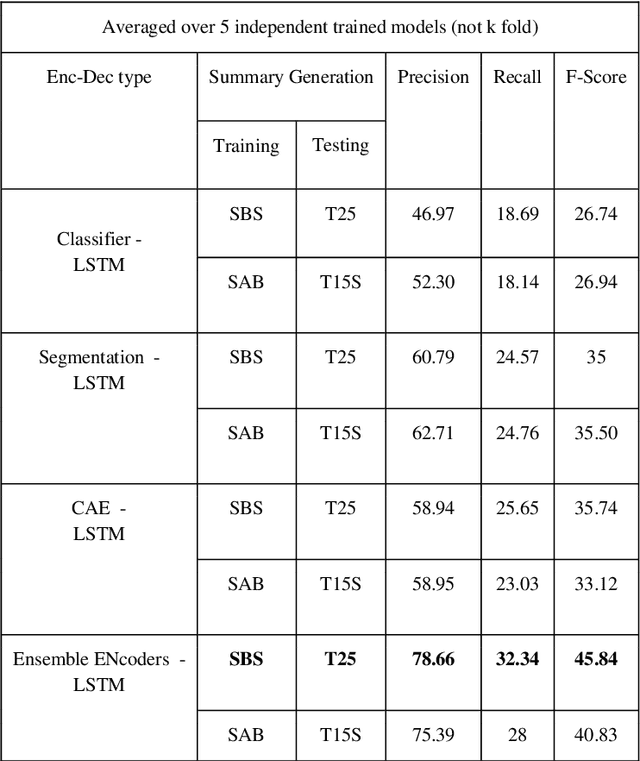
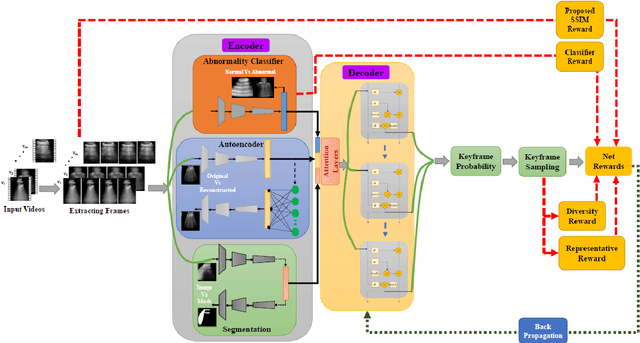
Abstract:The COVID-19 pandemic has highlighted the need for a tool to speed up triage in ultrasound scans and provide clinicians with fast access to relevant information. The proposed video-summarization technique is a step in this direction that provides clinicians access to relevant key-frames from a given ultrasound scan (such as lung ultrasound) while reducing resource, storage and bandwidth requirements. We propose a new unsupervised reinforcement learning (RL) framework with novel rewards that facilitates unsupervised learning avoiding tedious and impractical manual labelling for summarizing ultrasound videos to enhance its utility as a triage tool in the emergency department (ED) and for use in telemedicine. Using an attention ensemble of encoders, the high dimensional image is projected into a low dimensional latent space in terms of: a) reduced distance with a normal or abnormal class (classifier encoder), b) following a topology of landmarks (segmentation encoder), and c) the distance or topology agnostic latent representation (convolutional autoencoders). The decoder is implemented using a bi-directional long-short term memory (Bi-LSTM) which utilizes the latent space representation from the encoder. Our new paradigm for video summarization is capable of delivering classification labels and segmentation of key landmarks for each of the summarized keyframes. Validation is performed on lung ultrasound (LUS) dataset, that typically represent potential use cases in telemedicine and ED triage acquired from different medical centers across geographies (India, Spain and Canada).
Towards Fast Region Adaptive Ultrasound Beamformer for Plane Wave Imaging Using Convolutional Neural Networks
Jun 13, 2021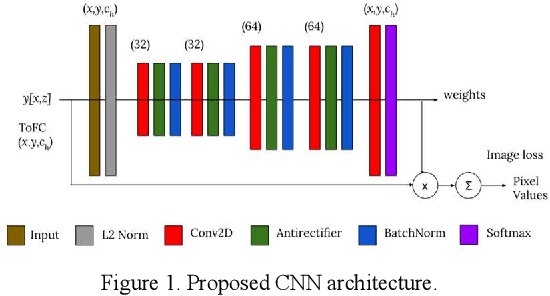
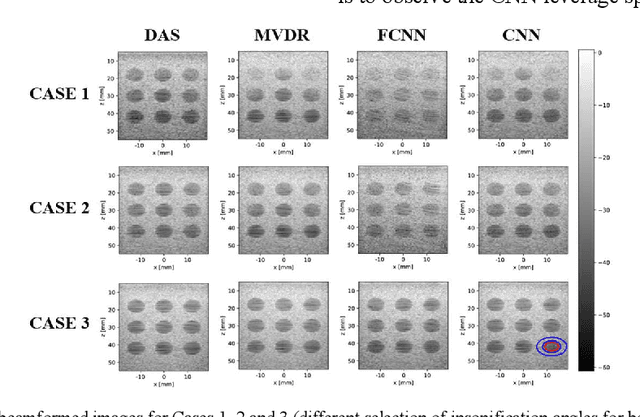


Abstract:Automatic learning algorithms for improving the image quality of diagnostic B-mode ultrasound (US) images have been gaining popularity in the recent past. In this work, a novel convolutional neural network (CNN) is trained using time of flight corrected in-vivo receiver data of plane wave transmit to produce corresponding high-quality minimum variance distortion less response (MVDR) beamformed image. A comprehensive performance comparison in terms of qualitative and quantitative measures for fully connected neural network (FCNN), the proposed CNN architecture, MVDR and Delay and Sum (DAS) using the dataset from Plane wave Imaging Challenge in Ultrasound (PICMUS) is also reported in this work. The CNN architecture could leverage the spatial information and will be more region adaptive during the beamforming process. This is evident from the improvement seen over the baseline FCNN approach and conventional MVDR beamformer, both in resolution and contrast with an improvement of 6 dB in CNR using only zero-angle transmission over the baseline. With the observed reduction in the requirement of number of angles to produce similar image metrics would prove advantageous in providing a possibility for higher frame rates.
 Add to Chrome
Add to Chrome Add to Firefox
Add to Firefox Add to Edge
Add to Edge